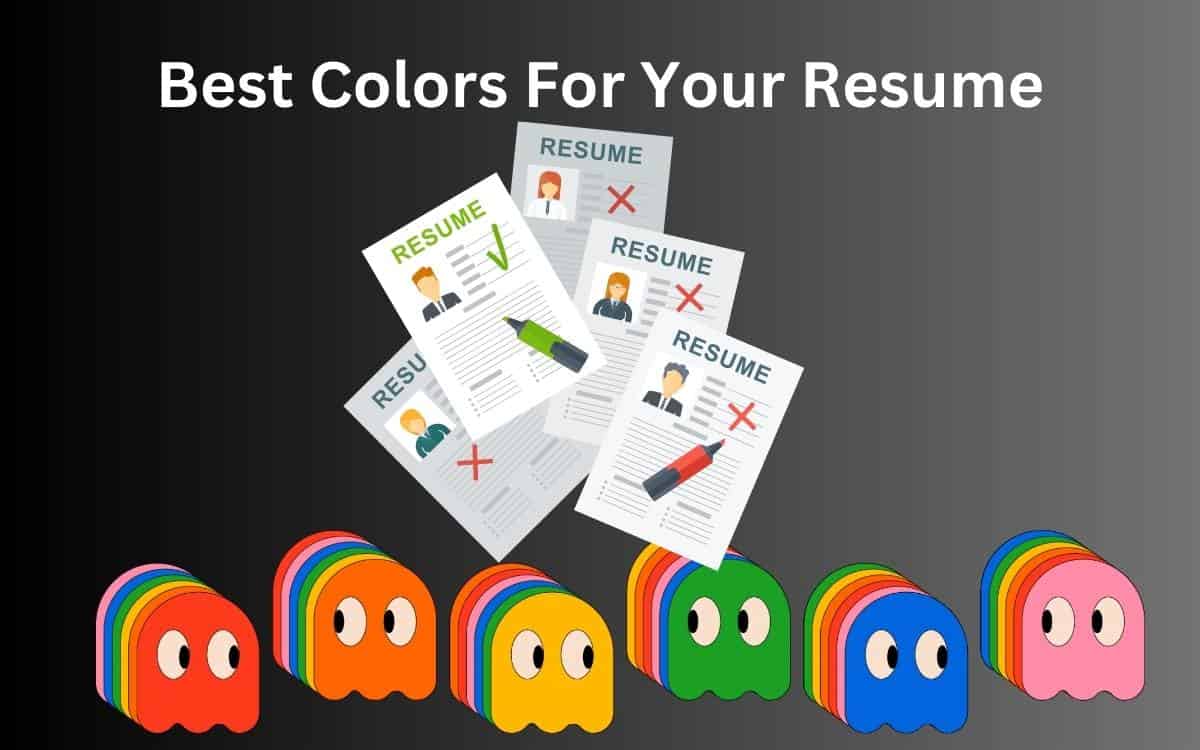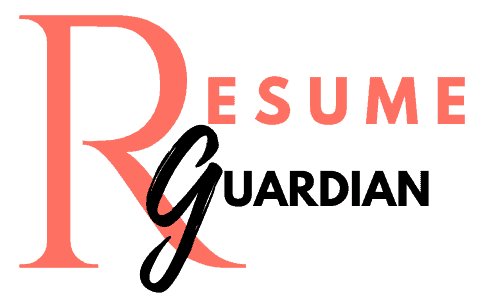
In today’s highly competitive job market, job seekers constantly search for ways to make their resumes shine.
The key lies in choosing the best colors for resume, which can significantly enhance its visual appeal and catch the attention of potential employers.
In this comprehensive article, we delve into the art of color selection, explore the psychological impact of colors, and provide personal advice on leveraging the best colors to optimize the effectiveness of your resume.
Let’s uncover the secrets to creating a visually captivating resume that captures attention, opens doors for you, and positions you ahead of your competition.
The Importance of Choosing the Right Colors for Your Resume

Job seekers are mostly concerned about the content and structure of their resumes, but they overlook the importance of using colors effectively.
But remember, the right choice of colors on your resume can significantly affect how potential employers perceive it.
Colors can influence emotions and perceptions differently; they can convey trustworthiness and professionalism and can draw attention to important details.
Therefore, when choosing colors for your resume, you must be mindful of how they might impact the reader’s expectations.
A well-crafted color scheme can enhance the visual appeal of your resume and make it stand out from others.
Best Colors for a Resume
Every job seeker wants their resume to stand out from the crowd. One way to achieve this is by incorporating color into the design.
Choosing the right colors that align with your industry and convey professionalism is important. In this section, we’ll explore some of the best colors to use on a resume and why they work.
Colors to Use
1. Blue
- Blue is a popular color choice for resumes because it conveys professionalism and trustworthiness.
- It’s associated with stability, logic, and order.
- It has a calming effect on the reader, making it an ideal choice for those in high-stress industries such as finance or healthcare.
When using blue on your resume, consider pairing it with white or grey accents for a clean and modern look.
2. Black
- If you’re looking for a classic and timeless color choice for your resume, black is always a safe bet.
- It adds sophistication to the overall look of the document while remaining professional.
Black can be used in several ways on a resume – as text color, background color, or borders around sections. When pairing black with other colors, consider using lighter shades such as white or pastels to create contrast.
3. Green
- Green symbolizes growth and harmony, making it an ideal choice for resumes in nature, health, or finance-related industries.
- It’s also associated with wealth, making it suitable for banking or investment management careers.
Darker shades of green on your resume can appear formal, while lighter shades seem more relaxed. Consider pairing green with neutral colors like grey or beige for balance.
4. Grey
- Grey is a neutral color that offers versatility when designing your resume.
- It’s a popular choice because it can be paired with other colors to create a modern and professional look.
Grey is often used as the primary color for resumes in creative industries such as design or advertising. When using grey on your resume, consider pairing it with brighter colors like orange or red to make certain elements pop.
Colors to Avoid on a Resume
While some colors can enhance the look and feel of your resume, others can detract from it. Here are some colors you should avoid when creating your resume:
Avoid Colors
1. Bright Neon Colors
While you might think that a bright neon color will make your resume stand out, it just makes it look unprofessional and tacky.
The goal of your resume is to showcase your skills and qualifications in the best possible light. Using neon colors will only distract from this purpose.
Instead, opt for more muted or understated colors that still catch the reader’s eye without overpowering the content of your resume.
2. Bold Patterns or Designs
Another thing to avoid when using color on a resume is bold patterns or designs. These can be distracting and take away from the overall professionalism of your document.
If you want to add visual interest to your resume, consider using subtle textures or gradients. These add depth and dimension without being too flashy.
3. Overuse of Multiple Colors
Be careful not to overuse too many colors on your resume. While using a few different shades can help create an aesthetically pleasing design, going overboard can make things look cluttered and overwhelming.
When choosing colors for your resume, consider what will convey professionalism and trustworthiness while avoiding unwanted distractions by using too many bright neon colors or bold patterns.
Tips for Choosing Colors on a Resume
Choosing the right colors on your resume can seem difficult, but there are several tips to keep in mind that will help you make the best choices.
1. Industry Norms
The number one thing to consider is industry norms. Different industries have different expectations regarding resumes, so it’s important to research and see what colors are commonly used in your field.
For example, if you’re applying for a job in finance or law, more traditional colors like black or navy blue might be more appropriate. On the other hand, brighter and more creative colors might be acceptable if you’re applying for a job in marketing or design.
2. Complementary Colors
Another tip is to choose complementary colors. This means you have to select colors that work well together and enhance each other’s appearance when combined.
You can achieve a visually pleasing effect by choosing complementary color combinations that help your resume stand out. Keeping your color choices simple and consistent throughout your resume is best to maintain a clean and polished look.
Stick to one or two main colors used consistently across the document.
Avoid using too many different shades or variations of the same color, as this can make your resume appear cluttered and difficult to read.
3. Font Choice & Formatting
Ensure that your font choice and formatting remain consistent across all resume sections.
Practical Steps You Can Take Today to Choose Your Resume Colors
Here are some practical tips that can help you in selecting complementary colors for your resume:

1. Understand the Color Wheel
- Familiarize yourself with the color wheel, which consists of primary colors (red, blue, and yellow), secondary colors (created by mixing primary colors), and tertiary colors (created by mixing primary and secondary colors).
- Complementary colors are located opposite each other on the color wheel.
- Canva color wheel is a good read.
2. Use Online Color Tools
- Utilize online color tools such as Adobe Color or Coolors to explore various color combinations.
- These tools either provide pre-designed palettes or allow you to create your own and see how different colors complement each other.
3. Opt for High Contrast
- Complementary colors have high contrast and can make specific elements on your resume stand out, like important sections or headings. For example, consider using a combination of blue and orange or purple and yellow.
- Check your color contrast using this website.
4. Balance with Neutrals
- Balancing your resume with neutral shades such as white, gray, or black is essential. Neutrals help prevent overwhelming the reader and provide a clean and professional look.
- Learn more about it in Flatuicolors
5. Consider Color Psychology
- Different colors evoke different emotions and can convey specific messages. Consider the nature of the job you’re applying for when choosing colors. For example, blue is often associated with trust and professionalism, while green can convey a sense of growth and vitality.
- Color-meanings is a good read on the psychology of colors.
6. Test for Legibility
- Your resume should be easy to read, so avoid using clashing colors or low-contrast combinations. Test your color choices by printing or viewing a sample on different devices.
- Use Responsively.app for the legibility test.
7. Be Consistent
- Once you choose complementary color combinations for your resume, it should be consistent throughout the document. Use the selected colors for your headings, subheadings, and other relevant sections.
- Canva is an excellent website for color combinations.
Final Thoughts
Choosing the right colors for your resume can significantly affect how potential employers receive it. When selecting colors, keep the overall look of your resume in mind.
You must consider the industry you’re applying to and whether certain colors are more appropriate. For example, green might be a good choice for resumes in industries related to nature or finance.
Don’t be afraid to ask for feedback from trusted friends or colleagues on your color choices. A second opinion can often provide valuable insights you may have overlooked.
Choosing the right colors for your resume can help make it stand out from other applicants. While there are no hard and fast rules regarding color choice, following these best practices can help ensure your resume looks polished and professional.






